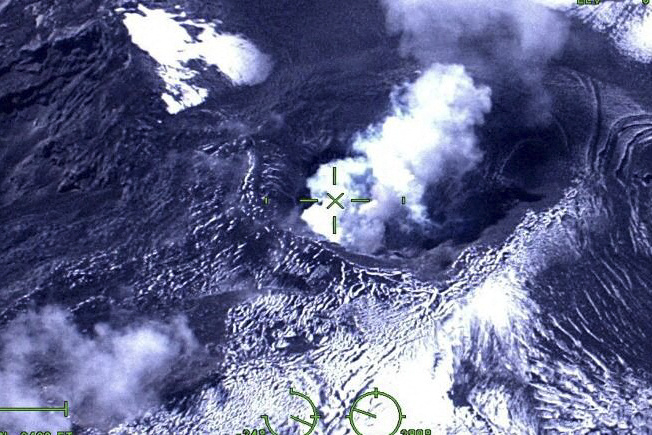(Bogota, Colombie) Les températures à l’intérieur du cratère du volcan Nevado del Ruiz, dans l’ouest de la Colombie, continuent d’augmenter, de même que l’activité sismique, signe d’un volcan « très instable » et d’une probable prochaine éruption, ont mis en garde vendredi les autorités colombiennes.
Le Nevado del Ruiz reste dans toutes les mémoires en Colombie pour la tragédie d’Armero, deuxième éruption volcanique la plus meurtrière du XXe siècle, où quelque 25 000 personnes avaient péri en novembre 1985 dans une avalanche de boue et de cendres provoquée par une éruption.
Le calvaire d’Omayra Sanchez, 13 ans, décédée dans un trou d’eau après une agonie de trois jours devant les caméras, avait alors bouleversé le monde entier.
Il est en état d’alerte « orange » depuis le 31 mars, lorsque la moyenne quotidienne des tremblements de terre à l’intérieur du volcan est passée de 50 à 12 000. Une alerte « rouge » lancée par les autorités signifierait une éruption très proche et une évacuation immédiate à grande échelle des populations.
« Les températures à l’intérieur du cratère ont considérablement augmenté, montant à plus de 700 degrés Celsius », a déclaré à un média local le conseiller présidentiel Luis Fernando Velasco, en charge du dossier.
À l’intérieur du volcan, qui culmine à près de 5400 mètres, « le magma se déplace vers le cratère », brisant les roches et provoquant une augmentation de l’activité sismique, localisée à une profondeur de 1 à 6 kilomètres à l’ouest et au sud-ouest du cratère.
Dans son dernier bulletin de surveillance du volcan, vendredi, le Service géologique colombien (SGC) met une nouvelle fois en garde : « Tous les indicateurs confirment […] that the activity of the Nevado del Ruiz volcano continues to be very unstable”.
The volcano has experienced several small eruptions over the past ten years, but the SGC believes that “it is likely that in a few days or weeks it will enter a major eruption”.
The latest images released by authorities show the mountain top lit up with glowing materials in the middle of the night from Thursday to Friday.
“Yesterday we saw a small eruption […] a combination of very hot ash and magma trying to get out of the crater,” Velasco explained.
Also in Ecuador
Some 57,000 people living in the 22 municipalities closest to the volcano are being evacuated in dribs and drabs, as farmers are reluctant to abandon their crops and livestock.
As in 1985, the main risk for the populations still remains an avalanche (or lahar), a mixture of ash, water and rocks, caused by the melting of the ice on the slopes of the volcano.
Located in the Central Cordillera and the Pacific Ring of Fire, Nevado del Ruiz is one of the 25 active volcanoes in Colombia.
In the south-east of neighboring Ecuador, the Sangay volcano expelled a column of ash eight kilometers high which fell on four surrounding provinces, said the Institute of Geophysics. The most affected was that of Chimborazo, 250 km from Quito, according to the Secretariat for Risk Management (SGR).
The activity of the colossus, which culminates at 5,230 meters, but without a population living around it, has been considered between moderate and high since 2019.
“This emission is similar to that observed during the most active periods of the current eruptive period of the volcano,” said the Institute of Geophysics (IG).
The Sangay, located in the Amazonian province of Morona Santiago (on the Peruvian border), as well as the Cotopaxi and the Reventador, are among the volcanoes considered to be erupting in Ecuador, out of the 84 in the country.
